Neuro - Full Process
FULL PROCESS
Below is a documentation of the process we took
combined with what's on our presentation page to
achieve our finished product.
BRIEF
1. What do we want to accomplish?
We want to design a memo app that will remind people of their goals every time they look at their smart phone screens, not only will this allow people to be more productive, but also show and encourage people to use their reticular activating system to their advantage with an app. The app will allow people to reprogram their brain with goals, to-do list on the calendar, and reminders.
2. Who are we talking to?
We are talking to ambitious people who need an extra push, organized planner, and a strong system that works to give them more control over their life. With control you can direct your life towards your goals and achieve anything. Users would be between the ages of 23 - 40. Females and males.
3. What do they think now?
They are thinking of ways to stay consistent in life but fall off track somehow, because they simply don't know what they don't know. They are thinking of their goals but are not taking advantage of the part of the brain that controls the outcome of their life. They are finding hacks in their phone to combine time reminders, to do lists, and calendars. The process of using the phone for the perfect goal setting tool is difficult.
4. What do we want them to think?
We love this application! I never knew what the RAS was until I used this app, it all makes sense now. I am slowly changing my life for the better and staying productive through my day. We want them to realize the importance of the subconscious mind (WYTAYBA)
5. Why should they think that?
Because people look at smart phone screens over 110 times a day, so the lock screen can be a perfect tool to remind people of their goals subconsciously.
6. What do we want to accomplish?
Reprogramming the brain to achieve maximum focus.
INTERVIEW Q&A
Christian Burwell
Age 23
Real estate agent
1. What are your long-term goals?
2. How do you keep up with your goals?
3. How do you stay organized?
4. Are there any problems in the way of your goals?
5. How do you overcome these problems?
Dijon Durham
Age 24
Graphic designer
1. What are your long-term goals?
2. How do you keep up with your goals?
3. How do you stay organized?
4. Are there any problems in the way of your goals?
5. How do you overcome these problems?
Colleen Greenridge
Age 49
Therapist
1. What are your long-term goals?
2. How do you keep up with your goals?
3. How do you stay organized?
4. Are there any problems in the way of your goals?
5. How do you overcome these problems?
Retina Dhoson
Age 48
Social worker
1. What are your long-term goals?
2. How do you keep up with your goals?
3. How do you stay organized?
4. Are there any problems in the way of your goals?
5. How do you overcome these problems?
Aaliyah Patterson
Age 24
Esthetician
1. What are your long-term goals?
2. How do you keep up with your goals?
3. How do you stay organized?
4. Are there any problems in the way of your goals?
5. How do you overcome these problems?
RESEARCH
SCIENTIFIC SUPPORT
Through Neuroscience research, we've uncovered a study that proves people look at their phones between 50-100 times a day. With that study in mind, we researched more about behavior and what part of the brain is most responsible for that.
REFINED PROBLEM STATEMENT
What if we told you we can remind people up to 50 times a day without nagging and bombarding them with notifications?
HYPOTHESIS
We then found out from scientific research that the reticular activating system is influenced everyday by your actions and thoughts. If you see something multiple times a day, it will influence you and become consumed in your thoughts. How can we create a platform to best suite the way the brain works?
SOLUTION
What's the one thing people look at and concerned with the most times every day? The smart phone. If your plans/goals can live on your lock screen, you would see it many times a day as you open your phone. Your lock screen is one of the #1 tools for reprogramming your Reticular activation system and changing your behavior, allowing you to subconsciously and conscious become aware of your goals, to the point where you will not lose track of it...
PAPER PROTOTYPING
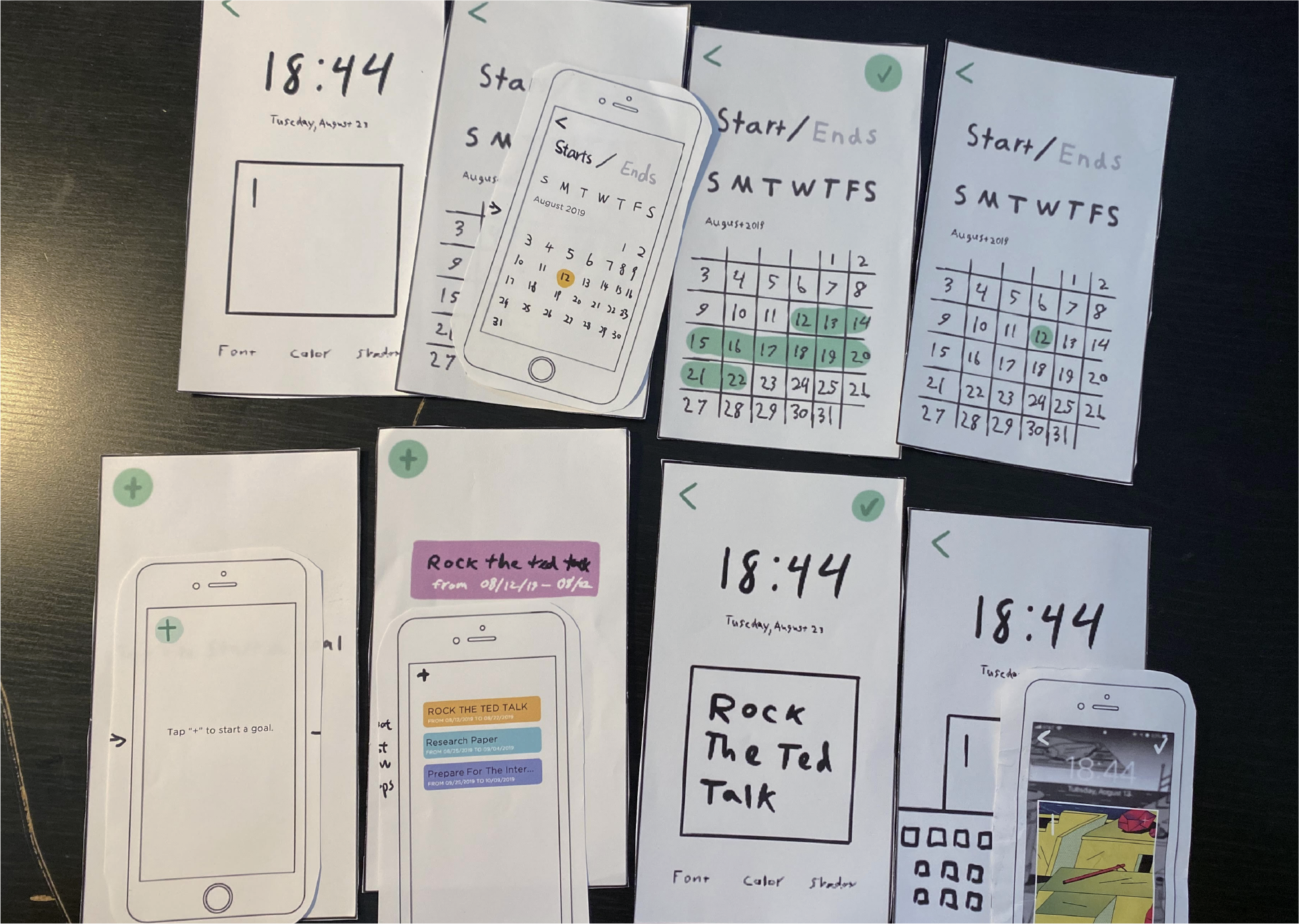
Before considering the user, we took a stab at prototyping the product our self as a first exercise. This allows us to get out the first "good" ideas/assumptions so we can dig deeper and build accordingly after testing. Because of testing we restructured how the lock screen options would work based on user feedback.
HOW MIGHT WE
After user feedback, we then ask ourselves a series of questions starting with
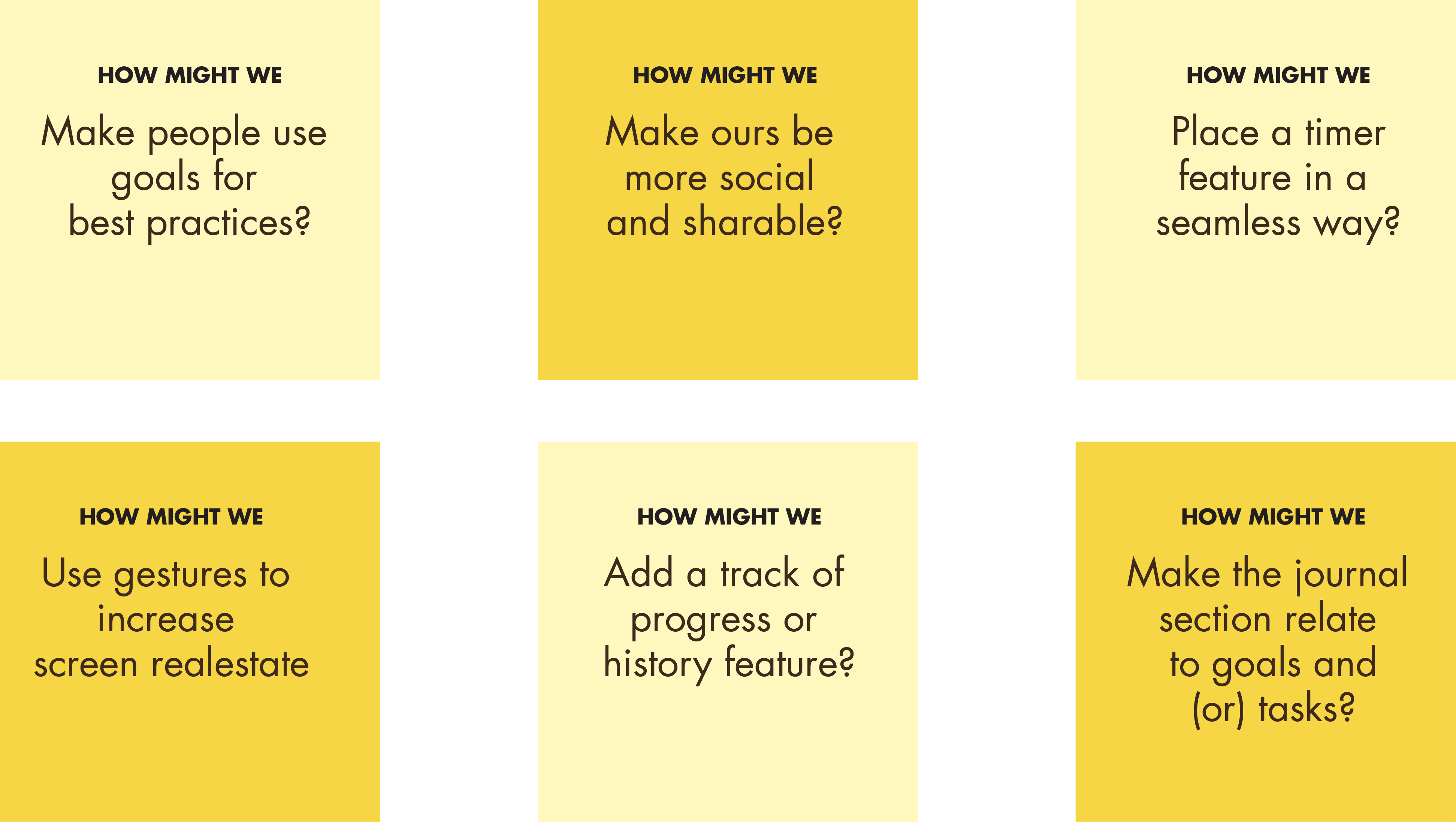
PERSONA
Creating personas based on our research so far, helps us to create a user centered design
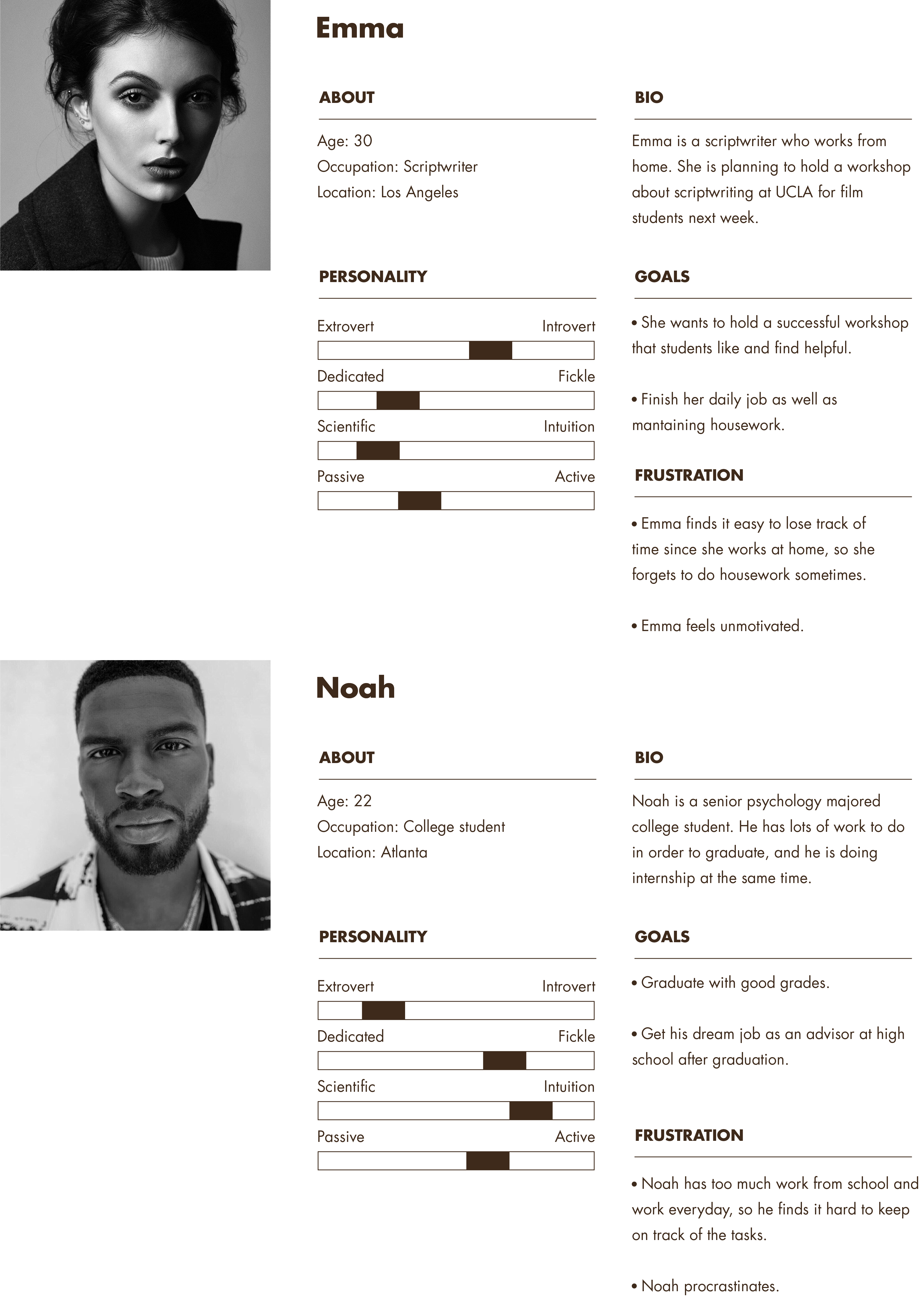
TAXONOMY
We created a taxonomy to define the main content for this app.
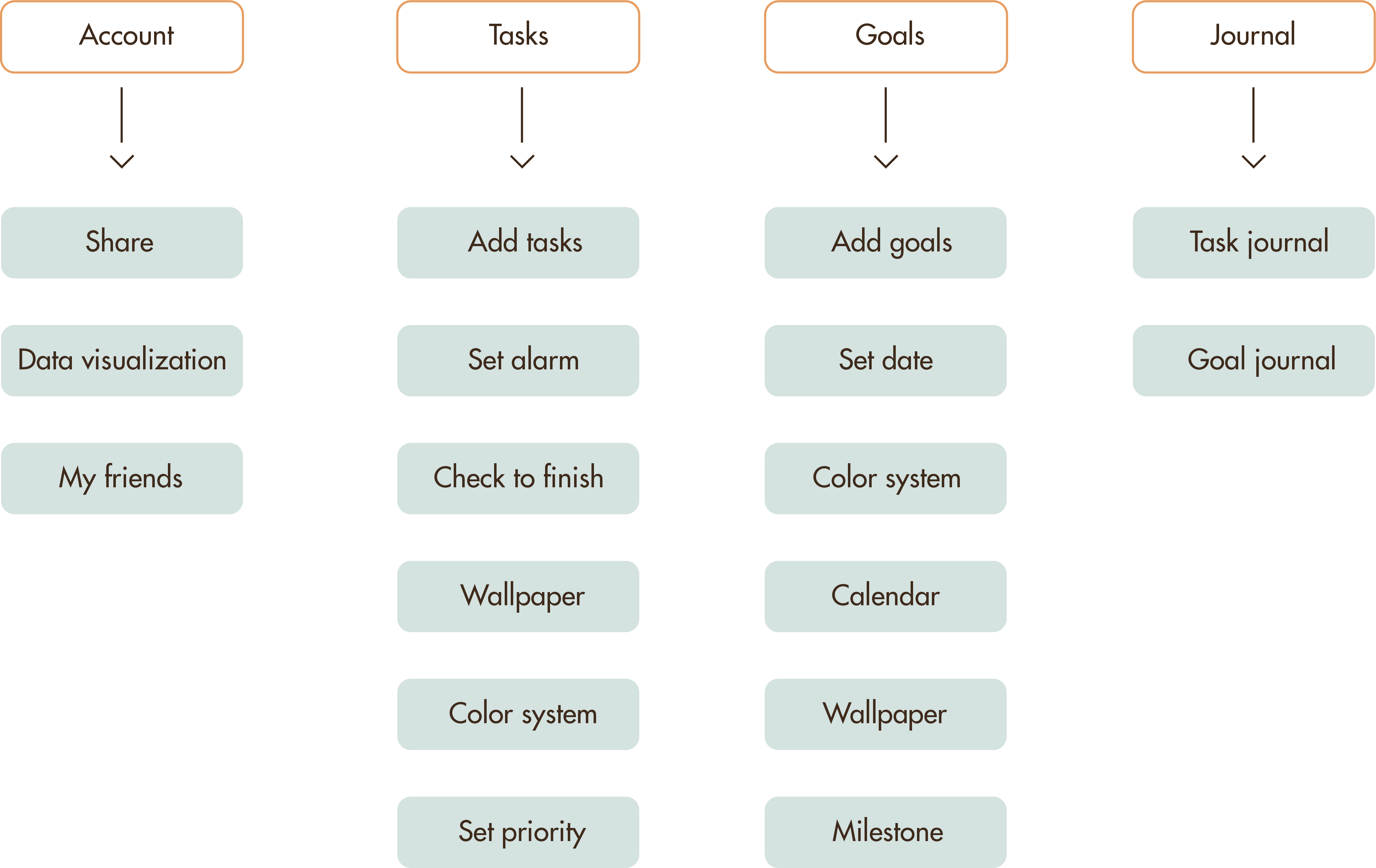
TASK FLOW
We created a task flow for every function to figure out how users would navigate and interact with this app.
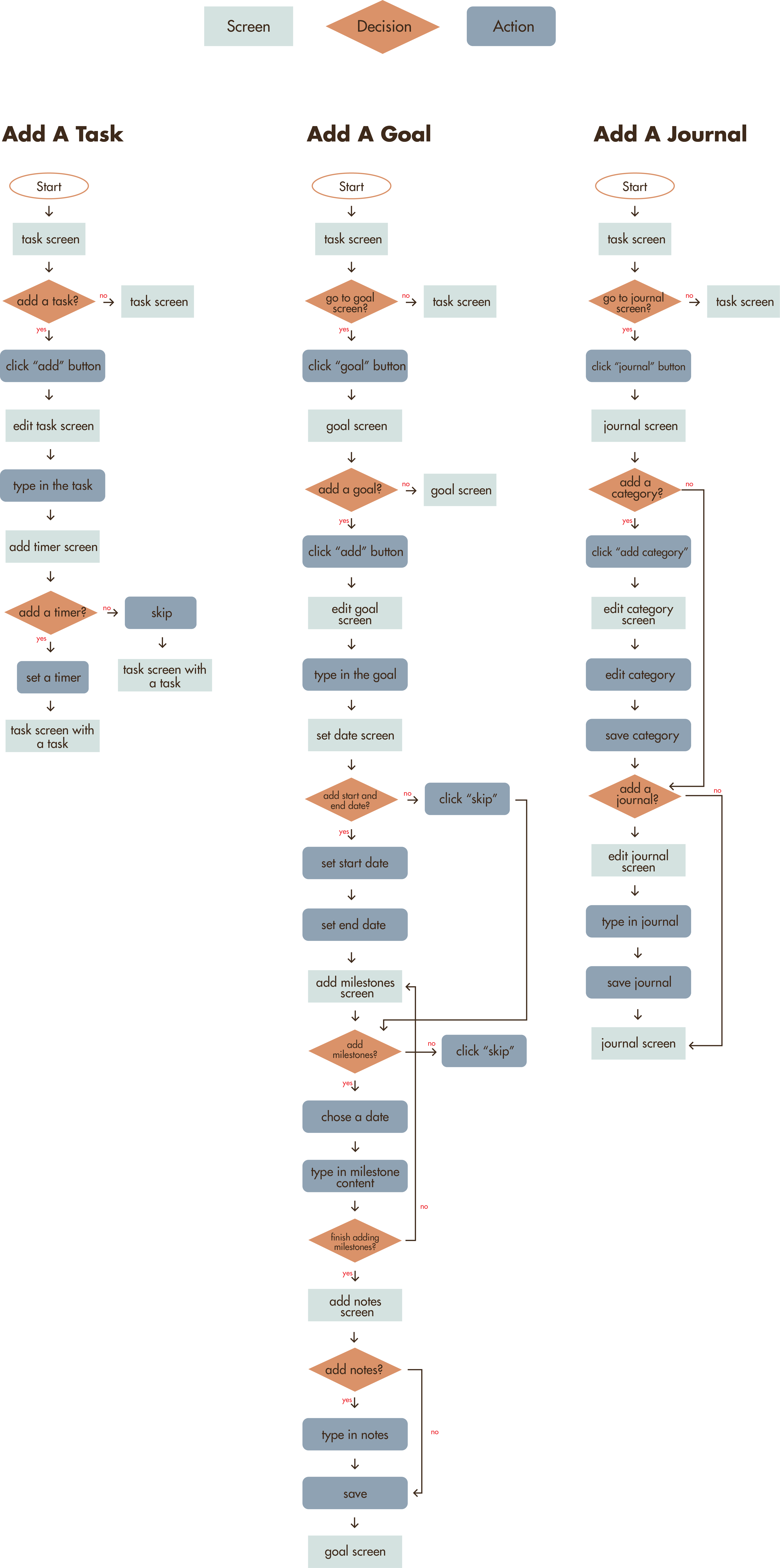
LOFI FRAMES
Before we move on to the UI design, we create lofi frames. This way, we can focus on perfection the features and the user flow without being distracted by colors and icons.
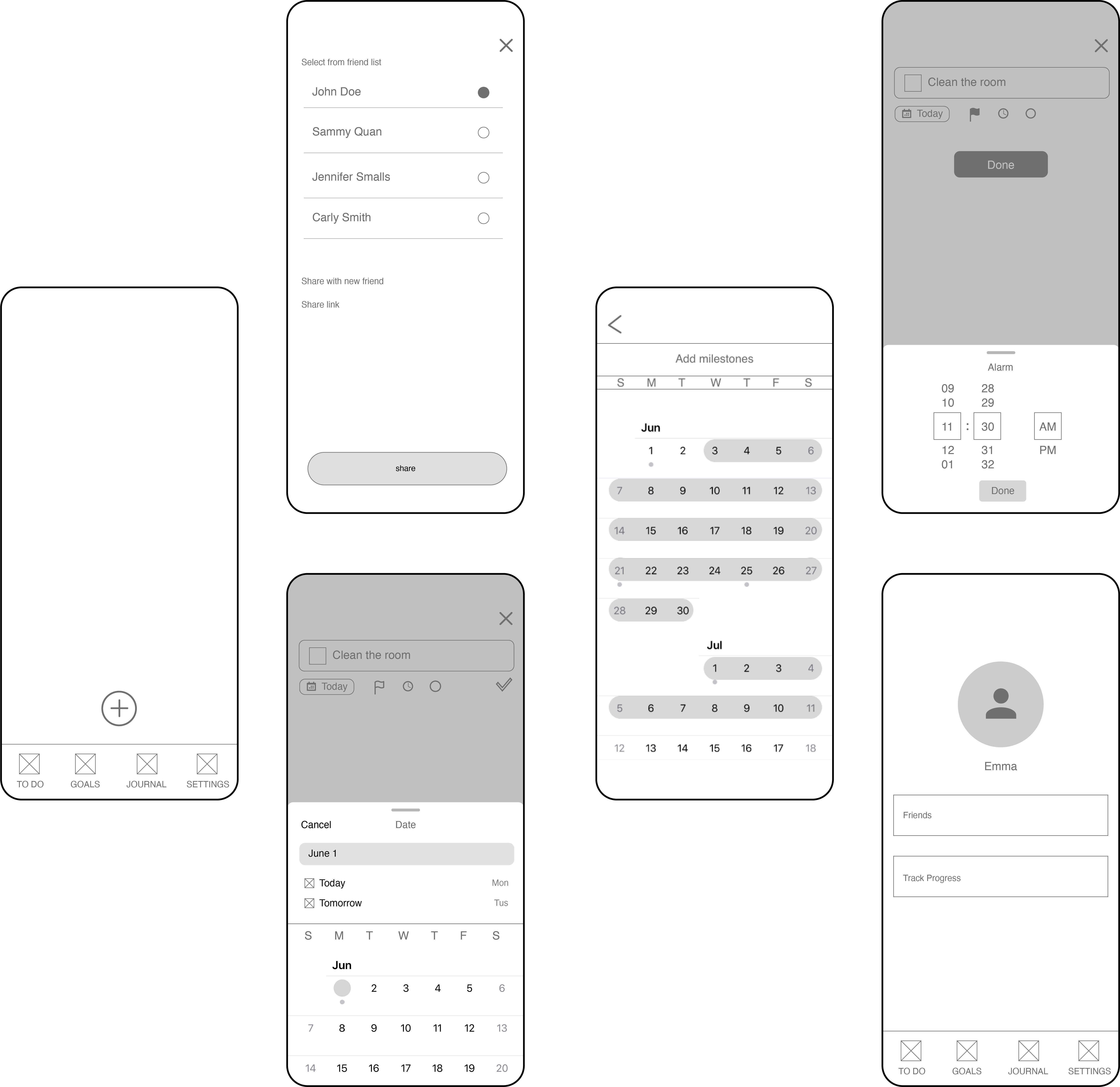
LOFI TESTING
User testing showed us a few unclear concepts to correct. Some iterations included:
Defined milestone section and list
Users brought to my attention that though the functions were simple they had to think longer on what to do for their actions amongst all the other options. Creating a section and list for Milestones gave it hierarchy and made the functions clearer.
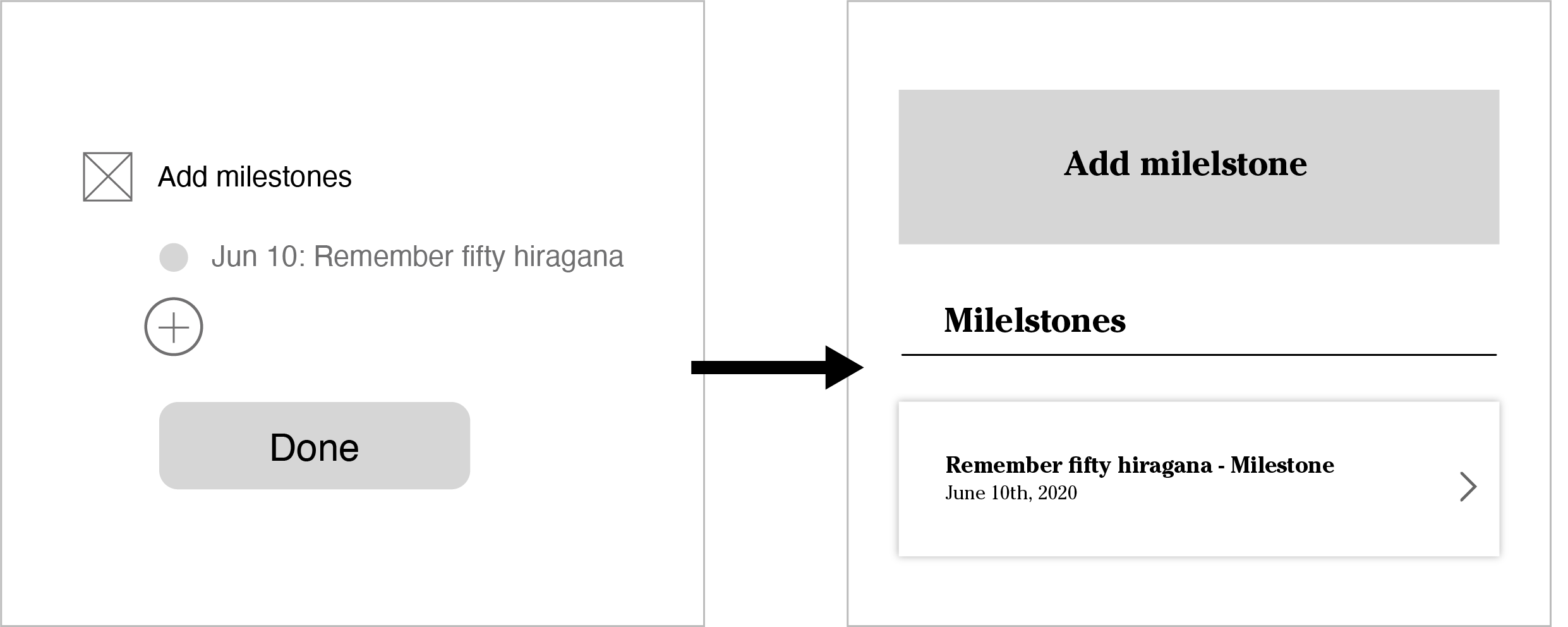
Prioritizing buttons accordingly
One user felt as if they missed something on the calendar because of its call to attention. For consistency and to clear confusion, we changed it to an icon to work as a system with the other functions.
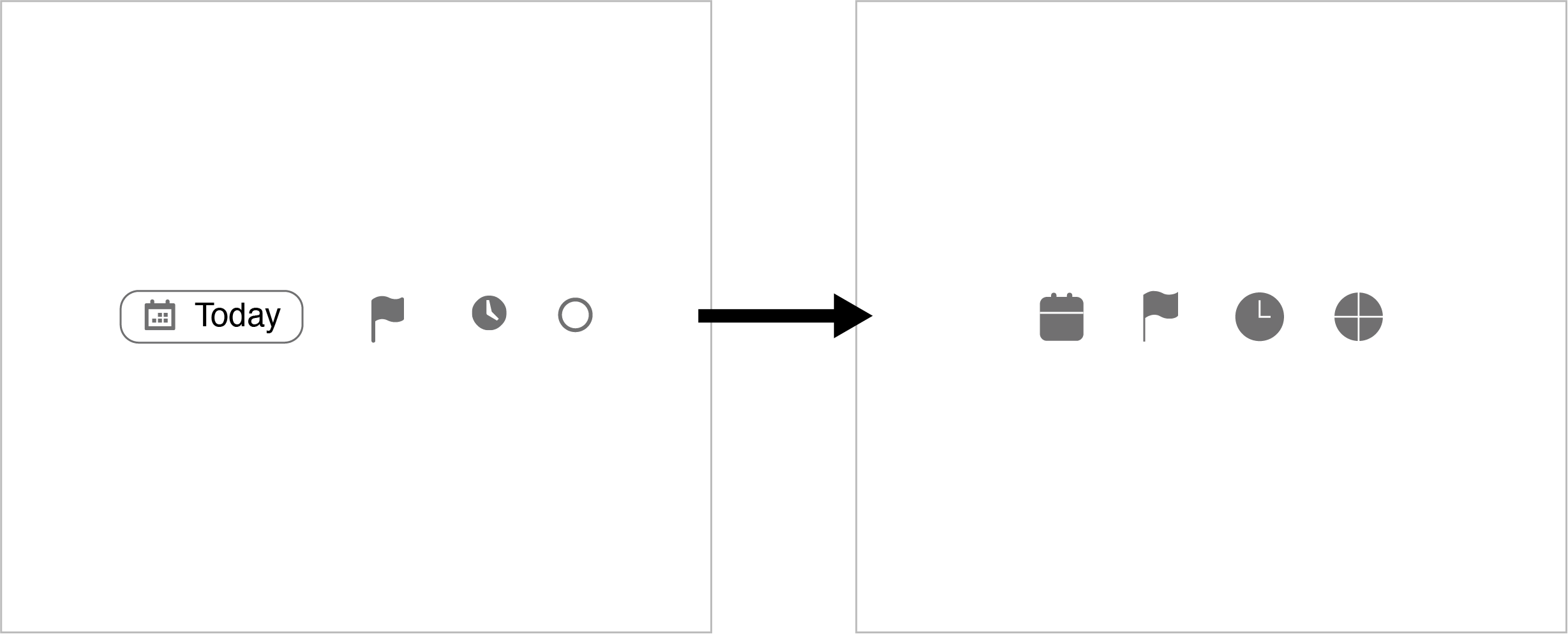
Guiding the user seamlessly
Keeping users updated with their overall calendar while choosing dates on their tasks and goals, will help them to prioritize and choose the best dates.

Paying attention to social norms
A common problem users had was understanding what important icon was. User perceived the important icon as a bookmark. Once changing it to a flag, they acknowledge its function more clearly.

